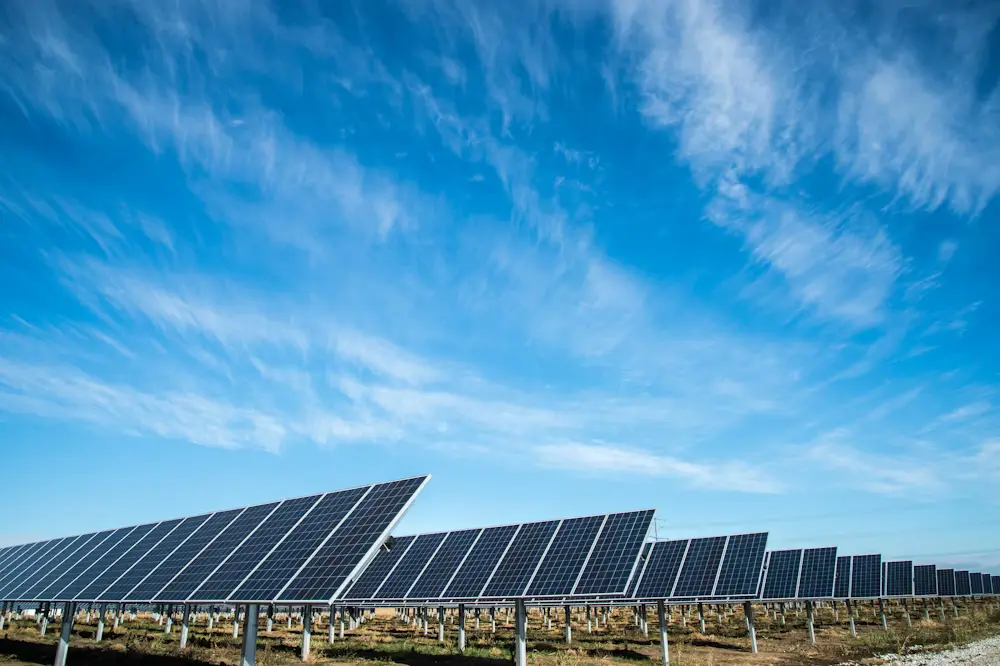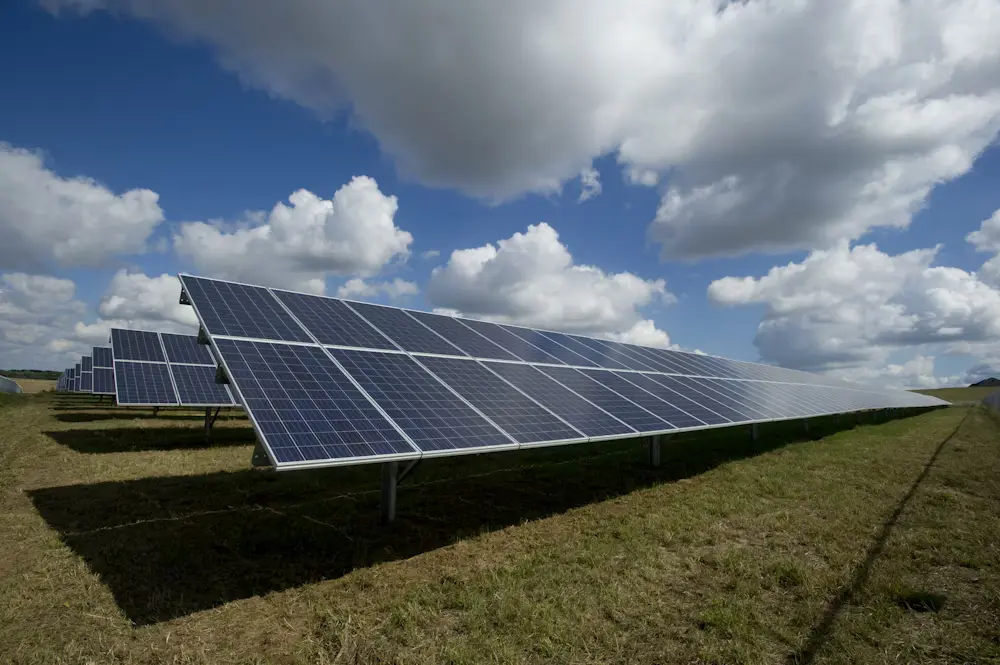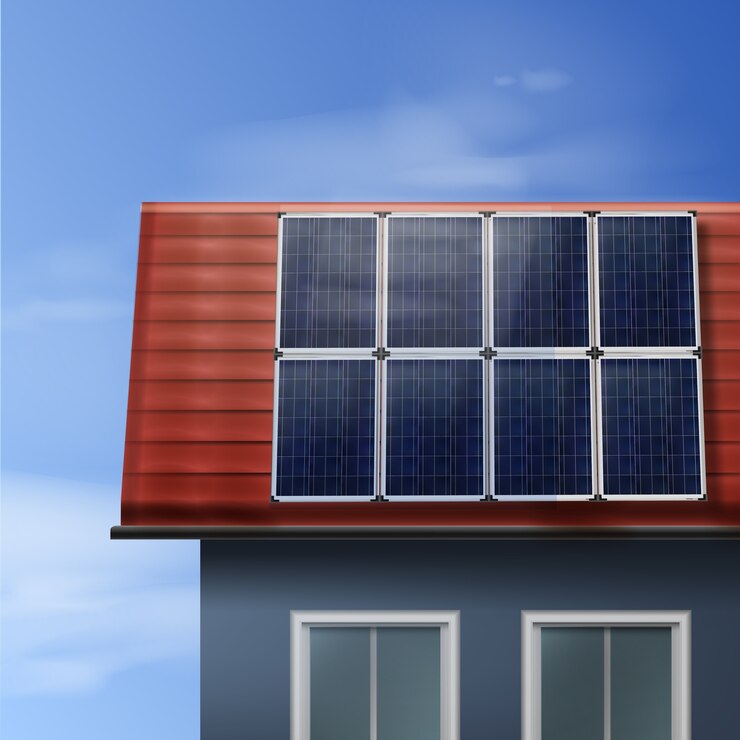As we explore innovative ways to harness renewable energy, wall-mounted solar panels have emerged as a game-changing solution. We’ve seen a surge in interest in these versatile systems, which offer a unique approach to solar power generation. Wall-mount solar panels are not just a trend; they’re reshaping how we integrate clean energy into our built environment.
This comprehensive guide will explore everything you need about wall-mounted solar panel systems. We’ll discuss their installation process, discuss their advantages, and help you choose the right wall for your solar panels. We’ll also examine these systems’ efficiency, power output, and the available types. Whether you’re considering a DIY project or looking for the best wall-mounted solar panels, we’ve covered all the essential information.
Understanding Wall Mounted Solar Panel Systems
What are wall-mounted solar panels?
Wall-mounted solar panels are an innovative solution for harnessing solar energy. We’ve found that these systems are a great addition for both residential and commercial properties looking to switch to solar power without using roof space or vacant yard areas. Typically, we install these panels as modules on south-facing walls to maximize energy absorption.
These systems utilize idle space on the sides of buildings, turning them into productive energy-generating surfaces. They’re particularly attractive for properties with limited roof space or those facing rooftop shading issues. Solve solar panel shading issues.

How do they differ from roof-mounted systems?
The main difference lies in their orientation and energy production patterns. Wall-mounted panels have a naturally steep slope, which affects their energy absorption. They’re most successful when the sun is lowest in the sky. This means they generally produce more electricity during winter when the sun’s position is lower, unlike roof-mounted systems that perform better in summer.
Another key difference is in maintenance. We’ve found wall-mounted systems to be easier to maintain than roof-mounted ones. They’re less prone to debris buildup, as rain naturally washes away dirt, and their vertical position prevents leaf accumulation. This leads to an easier cleaning routine and allows for simpler visual inspections without the need to climb onto roofs.
Key components of wall-mounted solar systems
- Solar Panels are the primary components that absorb the sun’s energy and convert it into electricity.
- Mounting Hardware: Wall-mounted systems require special mounting brackets to secure the panels against gravity. These flexible brackets allow us to achieve optimal angles for power production.
- Inverter: This crucial component converts the DC electricity generated by the panels into AC electricity that can power homes and appliances.
- Electrical Panel: This distributes the converted energy throughout the home as needed.
- Electric Meter: It measures the flow of electricity in and out of the home, allowing for energy bill offsets.
- Optional Energy Storage System: Some systems include batteries to store excess electricity for later use.
We’ve found that while wall-mounted systems may have slightly lower overall performance due to their orientation, they can be highly efficient in certain situations. A study by the National Renewable Energy Laboratory showed that wall-mounted panels can be a cost-effective way to generate electricity, with performance nearly equal to roof-mounted systems in some cases.
Installation Process for Wall-Mounted Solar Panels
Site assessment and planning
We start the installation process with a thorough site assessment. This crucial step ensures that our preliminary design is feasible and allows us to gather all the necessary information for a permit-ready plan. We typically conduct this assessment after closing the deal with the homeowner.

During the site visit, we focus on the external aspects of the property. We examine the wall condition where we’ll mount the panels, ensuring it’s structurally sound and can support the additional weight. We pay special attention to south-facing walls, which are ideal for maximizing energy absorption.
We use high-resolution aerial imagery to get accurate measurements and assess the surrounding environment. This helps us identify potential shading issues from nearby trees or buildings that might affect the system’s performance.
Mounting hardware and brackets
Due to their vertical orientation, wall-mounted solar panels require specialized mounting hardware. We use robust brackets designed to securely fasten the panels to the wall, countering the constant pull of gravity. These flexible brackets allow us to adjust the panels’ angle for optimal energy production.
Safety is our top priority during installation. Given the height and vertical nature of wall-mounted systems, we often use staging equipment to ensure a secure working environment. This extra precaution is crucial, as wall-mounted installations present more safety considerations than roof—or ground-mounted systems.
Wiring and electrical connections
For the electrical setup, we use specific components designed for solar installations:
- PV Wire or Solar Cable: These specialized cables interconnect the solar panels.
- MC4 Connectors: These industry-standard connectors ensure secure and efficient connections between panels.
- Wire Management Clips or Zip Ties: We use these to keep wires organized and protected from potential damage.
- Circuit Breakers or Fuses: These provide essential overcurrent protection for the system.
- The Charge Controller and Inverter Cables connect the charge controller to the battery system.
We ensure the system’s voltage falls within the inverter’s acceptable range when wiring the panels. This is crucial for optimal performance and equipment longevity. We also take care to group panels with similar conditions (like orientation and shading) on the same strings to maximize efficiency.
Following these steps and using the right equipment ensures a safe, efficient, and long-lasting wall-mounted solar panel installation.
Advantages of Wall-Mounted Solar Panels
We’ve found that wall-mounted solar panels offer several unique benefits, making them an attractive option for residential and commercial properties. Let’s explore some of these advantages.
Space efficiency
One of the most significant benefits we’ve noticed is the efficient use of space. Wall-mount solar panels utilize the idle space on the sides of buildings, turning them into productive energy-generating surfaces. This is particularly advantageous for properties with limited or unsuitable roof space. We can keep the roof surface-free for other uses or avoid it entirely, which is a great solution for homes with shaded or structurally unsuitable roofs.
Easier maintenance and cleaning
In our experience, wall-mounted solar panel systems are much easier to maintain than roof or ground-mounted options. The vertical orientation of these panels offers some unique advantages:
- Debris and snow buildup are rarely issues, as rainwater naturally washes dirt away.
- Gravity prevents leaves and other debris from accumulating on the panels.
- Visual inspections are more straightforward and safer, as climbing onto sloped roofs is unnecessary.
This ease of maintenance leads to a more straightforward cleaning routine, potentially extending the solar system’s lifespan. However, it’s worth noting that technicians might need to construct scaffolding to access the panels if a breakdown occurs, which can be more challenging than ground or roof systems.
Esthetic appeal
We’ve observed that wall-mounted solar panels can significantly enhance the visual appeal of a property. These systems have evolved from being purely functional to becoming sleek, customizable elements that complement modern architecture. Here’s how they contribute to esthetics:
- Seamless integration: Wall-mounted panels can blend seamlessly with a home or business’s architectural design.
- Modern appearance: They offer a sleek and contemporary look that can enhance the property’s overall appearance.
- Showcase sustainability: These panels can be an attractive way for businesses to demonstrate their commitment to eco-friendly practices.
Moreover, unlike ground arrays, wall-mounted panels maintain the property’s visual appeal without altering the landscape. The integration of solar energy in modern architecture goes beyond mere functionality; it embodies a harmonious blend of sustainability and artistic expression.
Right Wall for Solar Panel Installation
When installing wall-mounted solar panels, selecting the right wall is crucial for maximizing energy production. Several factors need to be considered to ensure the optimal performance of our solar panel system.
Assessing sun exposure and orientation
The amount of sunlight reaching our solar panels is a key determinant of efficiency. We use specialized tools like the Metravi 207 Solar Power Meter to measure sunlight intensity at various points on potential installation sites. This high-precision instrument helps us compare light intensity across different locations, ensuring we place the panels in the best possible spot.
North-facing walls are typically ideal for solar panel installation for those in the southern hemisphere. However, if we’re dealing with a property on a north-facing hill with many trees, we must be extra careful in our assessment. In such cases, we look for semi-open spots with the most sun exposure throughout the day.
Avoiding obstacles and shading
Shading can significantly reduce the energy production of our solar panels. We need to be mindful of any potential obstacles that might cast shadows on our panels, including nearby trees, buildings, or even other parts of the structure itself.
When assessing potential installation spots, we consider:
- Current obstacles: Existing structures or vegetation that might shade the panels.
- Future growth: Anticipating how trees or new constructions might affect sun exposure over time.
- Seasonal changes: How the sun’s path varies throughout the year and impacts shading.
We’ve found that placing panels at an angle can sometimes lead to self-shading issues, where one panel casts a shadow on another. Consider a flat installation, although this isn’t always the most efficient option.
We use solar power meters with extendable cables to make the best decision. This allows us to take readings from a distance, ensuring our shadows don’t interfere with the measurements. We also look for instruments with rapid response times for efficient assessment of optimal locations and angles.
By carefully considering sun exposure, orientation, and potential obstacles, we can choose the best wall for our solar panel installation. This thoughtful approach helps us maximize energy production and ensure the long-term efficiency of our wall-mounted solar panel system.
Efficiency and Power Output of Wall-Mounted Systems
We’ve found that wall-mounted solar panel systems offer unique efficiency and power output advantages, especially in specific geographical locations and seasons. Let’s explore how these systems compare to traditional roof-mounted arrays and how their performance varies throughout the year.
Comparing output to roof-mounted systems
In our experience, the efficiency of wall-mounted solar panels can vary significantly depending on the location and specific circumstances. We’ve seen cases where wall-mounted systems outperform roof-mounted arrays, particularly in areas with limited roof space or heavy snowfall. Renogy vs Ecoflow solar panels: check our guide.
For instance, in a project we observed in New York, a 37-kW wall-mounted array was installed on a hospital building due to limited roof space. This installation was estimated to produce 33.9 MWh per year, compared to only 12.1 MWh for a hypothetical roof-mounted system. This substantial difference highlights the potential of wall-mounted systems in urban environments with vertical space availability.
However, it’s important to note that wall-mounted systems may produce less energy in many cases than their roof-mounted counterparts. Our analysis shows that in New York, a wall-mounted array typically produces about 30% less energy than an equivalent roof-mounted system. This difference can vary dramatically based on geography:
- In Florida: wall-mounted systems produce 56% less than roof-mounted systems
- In Alaska: The difference narrows to just 9.8%
Seasonal variations in performance
One of the most exciting aspects of wall-mounted solar panels is their seasonal performance variation. We’ve noticed that these systems often excel during winter months, especially in northern latitudes.
In New York, we found that wall-mounted arrays perform equal to or better than roof-mounted designs for most fall and winter. This is particularly advantageous in snowy regions, as vertical panels are immune to snow accumulation, which can cause significant production losses in roof-mounted systems.
However, during spring and summer, wall-mounted panels typically underperform compared to roof-mounted systems. This is due to the sun’s higher angle in the sky during these seasons, which is less favorable for vertical installations.
Interestingly, wall-mounted arrays can even outperform roof-mounted systems in overall annual production in places like Alaska when snow accumulation is considered. This makes them attractive for regions with long, snowy winters and lower sun angles.
In conclusion, while wall-mounted solar panels may not always match the total annual output of roof-mounted systems, they offer unique advantages in certain climates and seasons. Their ability to capture low-angle winter sun and resist snow accumulation can make them an efficient choice, especially in northern latitudes or areas with limited roof space.
Types of Wall-Mounted Solar Panel Systems
We’ve found that wall-mounted solar panel systems come in various configurations, each with unique advantages. Let’s explore the main types we often work with.
Vertical installations
Vertical installations are becoming increasingly popular, especially with the advent of bifacial solar panels. These panels are installed upright, facing east and west, allowing them to generate electricity from sunlight reaching both sides throughout the data. We’ve noticed that vertical installations are particularly space-efficient, making them ideal for areas with limited land availability.

One exciting application is vertical bifacial solar panels in agricultural settings. For instance, a farm in Colorado installed these panels between greenhouses, minimizing land footprint while leveraging the reflective greenhouse materials to boost energy production.
Angled installations
While vertical installations have their benefits, we often recommend angled installations for optimal energy absorption. We’ve found that a 60-degree angle is ideal for capturing low winter sun. Without projecting more than 200mm from the wall, we can typically mount a standard panel (170cm by 110cm) at around 80°.
We use specialized mounting systems for these angled installations. While these can be more costly, they offer the advantage of easy angle adjustment, allowing us to optimize energy production throughout the year.
Hybrid roof and wall systems
In some cases, combining roof and wall-mounted systems can be highly effective. This hybrid approach maximizes energy production by utilizing roof space and wall area.
For example, we might install traditional roof-mounted panels for peak summer production, complemented by wall-mounted panels that excel during winter when the sun is lower. This combination can stabilize electricity generation throughout the year, potentially reducing reliance on gas power plants or storage capacities.
FAQs
What is the energy efficiency of wall-mounted solar panels?
Wall-mounted solar panels offer flexible positioning, which maximizes sunlight exposure and enhances energy production. In locations like Adelaide, where sun angles vary, wall-mounted panels can produce 10-15% more electricity than roof-mounted systems.
Can solar panels be installed on walls?
Yes, solar panels can be mounted on walls. This installation method is less visible from the ground and can be aesthetically pleasing. Wall-mounted panels can also be installed in various wall orientations, allowing them to capture sunlight effectively throughout the day.
What is the most effective method for mounting solar panels?
Fixed, stationary hardware is the simplest and most cost-effective method for mounting solar panels. While customized or sun-tracking mounts are available, they can be more expensive and are generally suited for unique installation scenarios.
Does the orientation of a solar panel installation matter?
Yes, the orientation of solar panels is crucial for maximizing electricity generation. South-facing setups are typically the most productive, although east-west-oriented roofs can also be effective. The installation angle is important but not as wall-mounted in critical as the direction, with most roof tilts suitable for solar panel installations.


